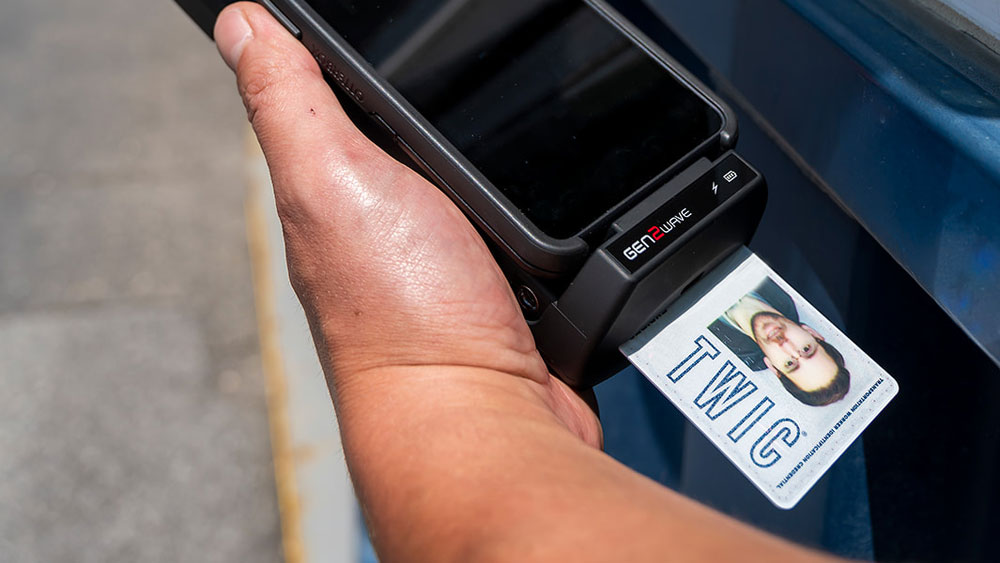
How TWIC Reader Innovation Is Improving Maritime Security
Transportation security is an inescapable reality in today’s world. We encounter this every time we fly.
But transportation security extends well beyond airports.
Tens of thousands of individuals access our ports and related facilities every day. Over the past three years, access control violations accounted for about one-third of all port inspection violations—the highest single category of inspection violations.
At the heart of the access control challenge is a disconnect between legacy analog procedures, human inference and advanced technologies.
Federal law requires maritime and chemical facilities to conduct vulnerability assessments and develop security plans that include personnel identification procedures and access control measures. Maritime workers must present a Transportation Worker Identification Credential (TWIC) for unescorted access to all secure and restricted areas at ports, chemical plants, and energy installations, to name a few.
To be granted a TWIC, individuals must clear a background check.
But what about TWIC holders who clear the check but later commit a disqualifying offense?
To address this risk, the Department of Homeland Security regularly issues a cancelled card list. This is meant to help ensure that current TWIC holders have not committed terrorism-related or other serious crimes. But this list can only be cross-referenced electronically, and many facilities rely solely on security guards at access points to conduct a cumbersome and time-consuming visual check of the TWIC.
Security personnel must match the photo on the TWIC with the individual and check the expiration date and security hologram. Access logs are often kept manually with pencil and paper. At certain facilities, this is done hundreds of times per day with operational pressure to process lines as quickly as possible. To make matters worse, each TWIC is not being cross-referenced against the canceled card list.
All this introduces multiple risks, overlooking details that slow down entry and can open the door to a critical breach of security.
Edward Seebald, a retired US Coast Guard Commander and current president and CEO of Seebald and Associates, a leading security consultation firm, believes “the vast majority of facilities do not know how to visually inspect the TWIC and are not in compliance with the regulation.”
A recent study by the Department of Homeland Security Inspector General revealed that a majority of “TWIC readers in the field have reached the end of their service life.”
With more than 2.2 million active TWICs in circulation as of May 2018, the magnitude of the challenge becomes clear.
Technology Innovation Brings a Solution
It’s easy enough to see how a potentially dangerous individual could gain entry with a lost or stolen card. Complicating the situation further, high-end printers and materials make it easy for criminals to forge high-quality identity documents: even with holograms.
Observing these security risks, Magnar LLC developed the FortifID electronic reader solution that uses a carrier-provided monitoring, automation, security and management system to help ensure security detail has access to the most current information to confirm TWIC credentials.
Our solution includes a dedicated portable device that performs a series of authentication, validation, screening, and documentation steps, immediately logging access control data within our highly secure portal through connectivity over AT&T’s 4G LTE network. Software upgrades, the latest version of the cancelled card list, and security configurations are automatically pushed to the readers.
Security guards authenticate, validate, and screen users prior to approving their access to secure areas. If the TWIC has been damaged, forged, cancelled or expired, the solution flashes a red “failed inspection” alert to security guards to prevent unauthorized access or to follow alternative security protocols. It works.
In one instance, security guards using the solution were surprised when it “red flagged” a cardholder. The cardholder had been regularly gaining unescorted access to a highly sensitive area at a petrochemical facility based on visual-only checks of the cardholder’s TWIC, which had an expiration date more than two years away. Access control risks like this are not uncommon at facilities that rely upon visual TWIC checks or aging TWIC readers.
Enhancing access control through innovative technology reduces these risks and ultimately improves safety.
JD Gerhart, Director of Security at Tradepoint Atlantic, one of the largest intermodal global logistics hubs in the United States, understands how the right combination of technologies promote both security and safety. He explains that, “With the benefits of real time access control updates, my team is able to see who is on our marine terminals at any given time, this is an added benefit should we have a security incident or event where we need to evacuate the terminals and account for all personnel on site.”
Technology solutions have their limitations, to be sure. But when we match ingenuity and the power of innovation with the right combination of technologies, we can make significant improvements to access control and public safety.

Leave a Reply